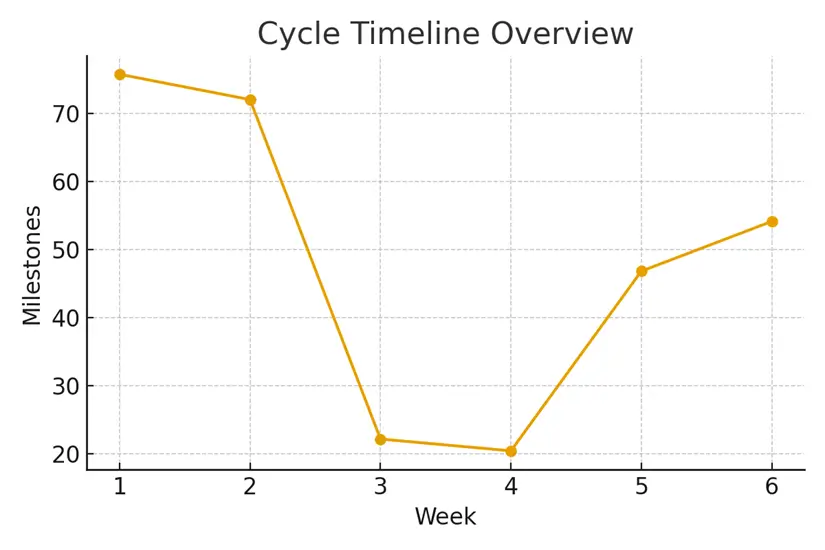
Ovarian Hyperstimulation Syndrome (OHSS) is a potential complication that can occur during IVF (In Vitro Fertilization) treatments, particularly when the ovaries overreact to fertility medications. Understanding OHSS prevention 101 is crucial for anyone beginning their fertility journey in NYC or elsewhere. This guide breaks down the basics of OHSS—its definition, prevention strategies, timing, and costs—to help patients make informed decisions that enhance IVF success rates while ensuring safe and humane care.
What Is OHSS and Where It Fits in the IVF Journey
OHSS occurs when ovaries become swollen and painful due to excessive response to fertility hormones, commonly used to stimulate egg production. Mild cases may resolve on their own, but severe OHSS can cause serious health issues such as fluid accumulation, dehydration, or even hospitalization.
Understanding OHSS prevention is essential in the IVF process, particularly during the ovarian stimulation phase, when hormone doses are carefully balanced to produce multiple eggs without triggering overstimulation. Preventing OHSS is about monitoring, timing, and communication between patient and care team.
Who Is at Risk and When to Escalate or Pause Treatment
Certain individuals have a higher risk of developing OHSS. These include:
- Women with polycystic ovary syndrome (PCOS)
- Those with high estrogen levels during stimulation
- Patients producing a large number of follicles
- Younger women or those with low body weight
When to pause or adjust treatment:
If your monitoring shows excessive follicle growth or rising hormone levels, your clinic might adjust medication doses or delay the trigger shot to reduce risk. The goal is balancing egg quality with safety—not pushing the body beyond its limits.
Step-by-Step Guide with Timing Checkpoints
- Baseline Assessment: Before stimulation, blood tests and ultrasounds establish your ovarian reserve and hormone levels.
- Medication Start: Carefully dosed fertility injections stimulate the ovaries to produce multiple follicles.
- Monitoring Visits: Regular ultrasounds and hormone checks guide dosage adjustments.
- Trigger Timing: When follicles reach the ideal size, a trigger shot induces ovulation—but only when conditions are safe.
- Egg Retrieval: Within 36 hours of the trigger, eggs are collected in a minimally invasive procedure.
- Post-Retrieval Monitoring: Hydration and rest are essential. If OHSS symptoms appear, clinics adjust your care immediately.
Timing is everything—a few hours can make the difference between a smooth recovery and unnecessary complications.
Pros, Cons, and Practical Costs
Pros of OHSS Prevention:
- Improves fertility outcomes and overall health
- Enhances IVF success rates by optimizing hormone response
- Reduces hospitalizations and emotional stress
Cons:
- Requires frequent clinic visits and monitoring
- Medication adjustments may delay treatment cycles
Typical Costs:
- Fertility medications: $3,000–$7,000
- Monitoring & ultrasounds: $500–$1,000 per cycle
- Egg retrieval & anesthesia: $3,000–$5,000
While prevention may slightly increase upfront costs, it saves thousands by reducing the risk of complications and failed cycles.
Outcome Drivers You Control vs. Those You Monitor
You Control:
- Hydration: Drink electrolyte-rich fluids during stimulation.
- Communication: Report any bloating, discomfort, or weight gain to your clinic immediately.
- Lifestyle: Maintain a balanced diet, rest adequately, and avoid high-intensity exercise.
You Monitor:
- Hormone levels (estrogen, progesterone)
- Follicle count via ultrasound
- Ovarian size and fluid buildup
Shared responsibility between patient and clinic leads to safer, more predictable outcomes.
Questions to Ask Your Fertility Clinic
- What is your protocol for OHSS prevention?
- How do you decide when to adjust medication doses?
- Can I use a freeze-all strategy to avoid OHSS risks?
- What are the IVF success rates for patients with similar risk factors?
- What aftercare support do you offer post-retrieval?
Expert Quote
“Protect timing and keep plans simple—quality improves when noise goes down.” — Clinical Team
This statement underscores that precision and simplicity are key to maximizing results while minimizing risks.
Patient Case Study: From Uncertainty to Clarity
A couple from NYC started their fertility journey feeling uncertain and anxious. Through consistent communication with their clinic and careful timing adjustments, they managed to reduce OHSS risk while improving egg quality. Their IVF cycle proceeded smoothly, and they successfully achieved pregnancy on their second attempt. Aligning logistics and expectations made their journey both predictable and empowering.
Testimonials
- “The steps finally made sense.” — A. & J., Manhattan
- “Costs were clear; no surprise bills.” — L., Hoboken
- “Nurses replied fast with practical coaching.” — K. & V., Queens
These real experiences show that transparency and education help patients stay confident and informed throughout the fertility process.
Additional Insights
- Legal consent steps streamline timelines and ensure alignment with ethical guidelines.
- Endometrial preparation minimizes delays, improving cost certainty and pregnancy rates.
- Single-embryo transfer policies enhance safety and patient experience.
- Frozen embryo transfer (FET) options often yield higher success due to better embryo selection.
- Insurance pre-authorizations can simplify budgeting and reduce stress.
Every step—from hormonal preparation to embryo transfer—relies on synchronizing timing, monitoring, and patient care.
Frequently Asked Questions (FAQs)
Q: Is this medical advice?
Ans: No. This guide is for educational purposes only. Always consult your fertility specialist before making treatment decisions.
Q: How many IVF cycles should I plan?
Ans: Think in ranges rather than fixed numbers. Cumulative success rates increase over multiple cycles.
Q: What drives IVF costs the most?
Ans: Major cost factors include fertility medications, genetic testing, anesthesia, and the number of cycles needed.
Q: How do I improve IVF success rates in NYC?
Ans: Choose experienced clinics, maintain a healthy lifestyle, and follow medical guidance closely for better outcomes.
Q: What’s the role of timing in fertility treatment?
Ans: Accurate timing of medication and egg retrieval maximizes results while minimizing OHSS risk.
Conclusion
Understanding OHSS prevention 101 is essential for anyone pursuing IVF or fertility treatments in NYC. With careful monitoring, precise timing, and open communication, patients can minimize risk and improve IVF success rates without unexpected costs or complications.
At Surrogacy4All, our team of fertility specialists and nurses offers personalized guidance, transparent pricing, and compassionate care to help you achieve your family goals safely and confidently. Whether you’re exploring your first cycle or seeking a second opinion, Surrogacy4All ensures every patient’s journey is informed, supported, and stress-free.

Dr. Kulsoom Baloch
Dr. Kulsoom Baloch is a dedicated donor coordinator at Egg Donors, leveraging her extensive background in medicine and public health. She holds an MBBS from Ziauddin University, Pakistan, and an MPH from Hofstra University, New York. With three years of clinical experience at prominent hospitals in Karachi, Pakistan, Dr. Baloch has honed her skills in patient care and medical research.




